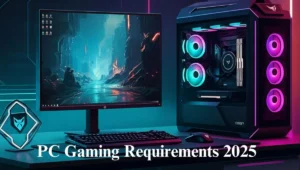Connecting devices like TVs, monitors, and projectors have become crucial to our daily lives. Whether setting up a gaming system or giving a business presentation, knowing the difference between VGA and HDMI can make all the difference. This guide will break down these two connection types, helping you understand their uses, benefits, and which one best suits your needs.
Table of Contents
What is VGA?
VGA, or Video Graphics Array, is an older analog interface introduced in 1987. It transmits video signals using a 15-pin connector and has been a staple in computing for decades.
Key Features of VGA:
- Analog Signal Transmission: VGA sends signals in analog form, which can degrade over longer distances.
- Resolution Support: Typically supports resolutions up to 640×480 pixels, though modern enhancements allow higher resolutions.
- Separate Audio Requirement: VGA only transmits video, so a separate cable is needed for audio.
What is HDMI?
HDMI, short for High-Definition Multimedia Interface, is a modern digital interface introduced in 2003. It has become the standard for high-quality audio and video transmission in home entertainment and professional setups.
Key Features of HDMI:
- Digital Signal Transmission: HDMI ensures sharp, high-quality signals with no degradation.
- High-Resolution Support: HDMI is up to 8K resolutions supported. (HDMI 2.1).
- Audio and Video in One Cable: A single HDMI cable transmits both audio and video, simplifying setups.
Technical Comparison: VGA vs. HDMI
Signal Type
- VGA: Uses analog signals, making it less precise and prone to interference.
- HDMI: Employs digital signals, ensuring superior image and sound quality.
Resolution and Refresh Rates
- VGA: Struggles with modern high-definition resolutions; typically limited to lower refresh rates.
- HDMI: Supports resolutions like 4K at 60Hz and 8K at 120Hz, ideal for gaming and professional use.
Audio Transmission
- VGA: Only transmits video, requiring an additional cable for audio.
- HDMI: Handles multi-channel audio formats, including Dolby Atmos and DTS:X.
Advantages of VGA and HDMI
Why Choose VGA?
- Cost-Effective: Often cheaper and readily available.
- Legacy Compatibility: Works well with older monitors and projectors.
Why Choose HDMI?
- Modern Compatibility: Ideal for TVs, gaming consoles, and Blu-ray players.
- Advanced Features: Supports technologies like HDR, ARC (Audio Return Channel), and CEC (Consumer Electronics Control).
Types of Cables and Adapters
VGA Adapters
- Commonly used to connect legacy systems to newer devices.
- Often paired with VGA-to-HDMI converters for compatibility.
HDMI Versions
- Standard HDMI: Basic connectivity.
- High-Speed HDMI: Supports 4K resolution.
- Premium High-Speed HDMI: Handles advanced features like HDR.
- HDMI 2.1: Supports 8K resolution and dynamic HDR.
Use Cases: VGA vs. HDMI
Best for VGA:
- Older Systems: Ideal for retro setups and older projectors.
- Budget Solutions: Cost-effective for simple presentations.
Best for HDMI:
- Home Entertainment: Perfect for connecting TVs, streaming devices, and gaming consoles.
- Professional Use: Supports high-definition video for presentations and conferences.
Future Trends in VGA and HDMI
Decline of VGA
- With limited support for modern resolutions, VGA is gradually becoming obsolete.
- Many new devices no longer include VGA ports.
Rise of HDMI
- HDMI continues to evolve, with versions like HDMI 2.1 offering unmatched performance.
- Increasing adoption in gaming, home theaters, and professional setups.
Comparison Table: VGA vs. HDMI
| Feature | VGA | HDMI |
| Signal Type | Analog | Digital |
| Max Resolution | Up to 640×480 | Up to 8K (HDMI 2.1) |
| Audio Support | No | Yes |
| Cable Complexity | Requires separate audio | Single cable for both |
Conclusion
When choosing between VGA and HDMI, consider your device’s compatibility and your need for quality. VGA is suitable for older systems but lacks the versatility and performance of HDMI. HDMI is the clear winner for modern setups, offering superior resolution, audio support, and advanced features like HDR and ARC. As technology advances, HDMI continues to dominate as the preferred choice for both home and professional use.
FAQs
Can I use a VGA-to-HDMI adapter to connect older devices to modern displays?
Yes, adapters are available to connect the older devices to (VGA and HDMI).
Does HDMI support 8K resolution?
Yes, HDMI 2.1 supports up to 8K resolution.
Why does VGA require a separate audio cable?
VGA only transmits video signals, unlike HDMI, which handles both audio and video.
What is HDMI ARC?
ARC stands for Audio Return Channel, which allows audio to be sent from your TV back to your sound system via the same HDMI cable.
Is VGA still relevant in modern setups?
VGA is mostly used for legacy systems but is becoming obsolete in favor of HDMI.





















Hi, I just visited techovive.com and wondered if you'd ever thought about having an engaging video to explain what you…
Hi, I just visited techovive.com and wondered if you'd ever thought about having an engaging video to explain what you…
Hi, I just visited techovive.com and wondered if you'd ever thought about having an engaging video to explain what you…
You have A Good Analyze.I agree with your comparison.
Hi there, We run a Youtube growth service, where we can increase your subscriber count safely and practically. - Guaranteed:…
Hi there, We run a Youtube growth service, where we can increase your subscriber count safely and practically. - Guaranteed:…
Hi there, We run a YouTube growth service, which increases your number of subscribers both safely and practically. - We…
Hi there, We run a Youtube growth service, where we can increase your subscriber count safely and practically. - Guaranteed:…
Very Helpful content. Thanks for sharing.
Hi there, I'm reaching out because we've just released a complete WordPress video training package with unrestricted Private Label Rights.…